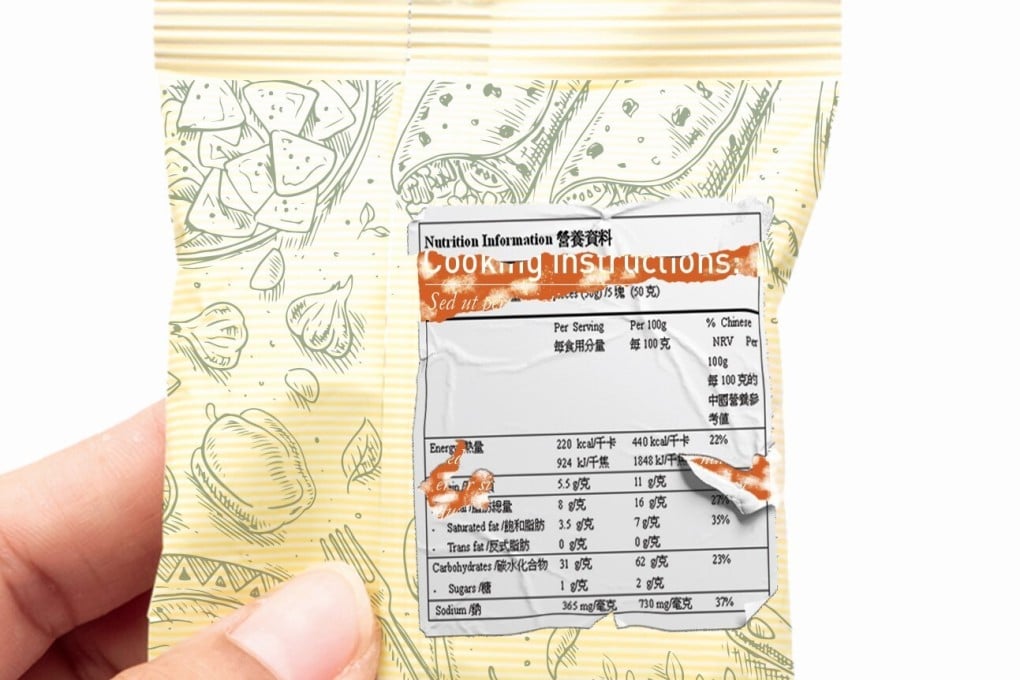Opinion | In Hong Kong, nutrition labels often obscure more than they inform – why?
- The Nutrition Labelling Scheme was introduced 10 years ago with the intention of standardising labels
- But with the sticker stuck willy nilly on a product, they can end up being more infuriating than informative

Thanks to Covid-19 curfews on eating out, lately I’ve been cooking at home more than I’m used to. I’ve also reached the time of life at which you forget the odd thing in the kitchen – recently, for instance, how long it takes to cook a particular variety of pasta.
There I was, water boiling nicely, poring over the packet instructions in search of the specified cooking time. And there it wasn’t. Or rather was – right under the obligatory and irremovable HKSAR stick-on nutrition label.
The snappily titled Food and Drugs (Composition and Labelling) (Amendment: Requirements for Nutrition Labelling and Nutrition Claim) Regulation 2008 has been with us for a decade now, having come into force in 2010. It is not, I agree, the most troubling piece of legislation enacted here over the past decade, but it is one of the most troublesome.
Particularly if you have just torn a fettuccine packet to shreds trying to separate it from what is essentially a Post-it note backed with super glue.
We all know where roads paved with good intentions lead, and when those intentions are bureaucratic, the journey is usually short. The idea behind introducing special labelling for pre-packaged edible goods for sale in Hong Kong was to standardise and clarify the presentation of nutritional information, so consumers could make informed choices.

